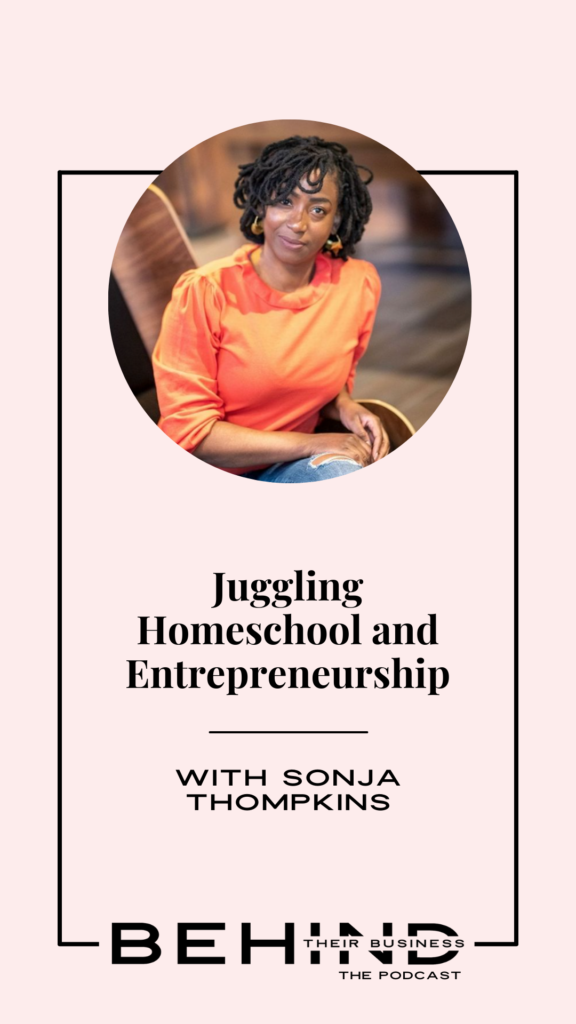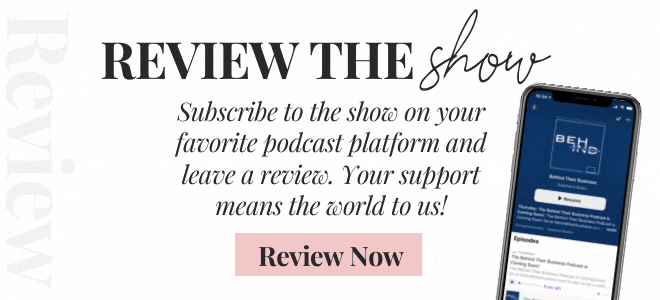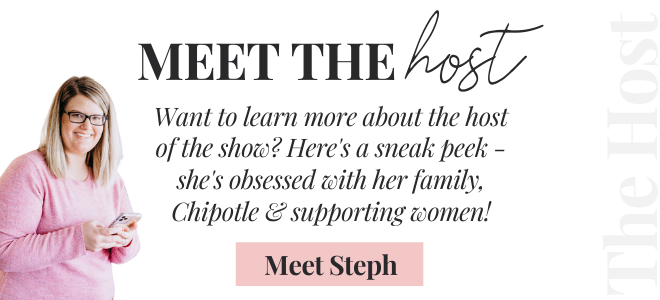WORKSHOP
Free
In this LIVE training, you'll learn the exact system to work less than 20 hours per week and make 6+ figures in one year with 1 team member & no ads.
Juggling Homeschool and Entrepreneurship With Sonja Thompkins
November 29, 2021
Sonja backstory and her brick and mortar businesses (01:28)
Sonja has been an entrepreneur for her adult life. She had four brick and motor businesses, which she ran for almost a decade before transitioning into online coaching and consulting.
Her dream was to become a hairstylist, and her journey started at 18 after graduating with a diploma and a state-approved cosmetology license. She was employed as a hairstylist, but at 24, she opened her own spa and salon.
Shortly after, Sonja opened a boutique, and from there, she opened two more boutiques.
Why Sonja closed down her brick and mortar businesses (03:22)
After getting married to a military man, Sonja’s businesses were self-sufficient, but they were in different states, and she didn’t get to do the fun things that she built her business to do – focus on her customers. She was doing the payroll, W2, and other administration work, but she wasn’t interacting with her clients.
This wasn’t what she loved to do so she decided it was time to pivot to coaching. She knew that this was the best next step because she was coaching other women for free at her stores, so she made it her main focus.
What Sonja offers in the coaching space (04:56)
For the first six years, Sonja’s focus was primarily to teach brick and mortar entrepreneurs how to run and scale their businesses. However, for the last three years, she discovered that as people were leaving her program, they had experienced so much more than they had signed up for.
This is what she loved doing – empowering women to feel their best and do things that normally seemed impossible. To her, this is not a job. It’s her calling.
How Sonja was able to run her businesses with her son (06:41)
When Sonja was pregnant, she had two stores, one in her state and another in a different state. She ran the businesses with her son until he was two years old.
The retail space was not big enough for him to run around and play in, and this was hard for Sonja due to her personality; she loves her son but she also loved the separation of her business as well. She enrolled him in Montesorri for a few years but realized that homeschooling made more sense for their family.
Why Sonja started homeschooling her son (11:12)
Sonja and her husband had unique experiences as black Americans living in the United States. Statistically speaking, most black boys are likely to be diagnosed with ADHD versus other race groups.
When they made the decision to homeschool their son, they did so because they knew it wouldn’t be conducive to his learning style. He was past the point of Montessori in their state and knew that the traditional school system wouldn’t work well for him.
“Homeschooling is not replicating school in your home; it’s teaching your children at home.”
Their initial idea was not homeschooling. Their son’s first experience was with Montessori; which she loves because it’s learning by doing.
He started schooling when he was about 18 months, but when he was three, they moved to Tennessee.
They put him in a Montessori school and the experience taught him a lot and also helped her to prepare for homeschooling. They didn’t transition from Montessori to homeschooling because of a learning challenge.
However, Sonja says she started noticing certain things that, for her, didn’t feel right. The atmosphere was not ideal for him.
In both schools, the proportion of white and black children was a problem. No one wants to be the only one in any setting.
And considering that at this age, it’s when children start noticing their differences and they didn’t want him to start feeling that he was the one who was different. The transition to homeschooling was focused on putting him in an environment that felt comfortable and not ostracized.
How homeschooling has affected Sonja’s business and how she manages both (20:19)
Sonja is the primary player in her son’s homeschooling. Her husband works as a federal firefighter and is in the Army Reserve part-time.
Because of this, he is out of the house most of the time, and she takes charge of the curriculum. However, when he is around, he takes over. This frees her to attend to things in her business that might be conflicting with her home schedule.
“The routine of the day works better than a tight schedule.”
According to Sonja, the best thing about homeschooling is that you get to make the schedule. For her, the only time it’s a problem is when she is not giving herself the grace to do it based on whatever is going on in their household.
Why homeschooling is not the same as distance learning (23:17)
Homeschooling is not replicating school in your home. On the contrary, distance learning is, and it requires you to follow a school schedule for the kids to learn.
Many parents confuse this with homeschooling. You shouldn’t try to replicate school at home because there is a reason why they have 6-7 hours days in traditional school.In schools, children have to catch the bus, get dropped off, eat at school, take attendance and teach 20 plus children in one setting.
You don’t need all this at home because you are dealing with one or a few children. Homeschooling is all about allowing yourself to be open enough to understand that you’re not trying to replicate school at home.
You’re just teaching your children at home.
How long homeschooling takes on average (26:24)
After Sonja’s son completed his last year of Montessori school, they continued from where they left in homeschooling. At Montessori, they don’t use grades, and they group children according to their age group and skillsets.
This is one reason why she loved their way of learning. He was only five when he transitioned to homeschooling, and they take about an hour and a half per day learning time.
They follow the state requirement, which is at least 180 days per year.
Homeschooling saves her from dealing with issues that most people deal with, including getting kids on and out of a routine. Sonja’s son is now eight and a half, and he’s in third/fourth grade.
According to her, mathematically, he has always been a little ahead as this is his strongest space. His studies are also expanding and because of this, he’s now doing about 2.5 hours of school time.
Children learn a lot even from us, and Sonja says it’s all about being intentional in what you want them to learn.
Creating a routine that works for your business and homeschooling (30:39)
If you are not the most organized person, sticking to a routine can help you get things done. You can always create a new routine depending on what is happening and what you need to happen.
Sonja spent 32 years on her own, but after getting married and having a son she knew she needed a routine. A routine is not a schedule.
You just need to know what you need to do between this time and that time. For Sonja, she does homeschooling between 9am – 12:30pm. She works in her business from 12:30 to 4:30, which is hard because she is passionate about what she does.
Sometimes she gets bitter due to limited time, but she always gives herself grace. For her, the routine of the day works better than a tight schedule.
How Sonja’s focus has shifted since she started giving more time to her son (33:43)
Sonja says that she has realized that she doesn’t have to be doing everything to scale her business. To her being on an online platform has given her great flexibility.
In her brick and motor business, she knew she had to be there physically and there more tangible things that they needed to do to be successful.
In the online space, she hired staff, and she only does things that they cannot primarily do for her, those in line with her passion.
“Your life should not come second to what is happening in your business.”
Sonja says that the goal of every entrepreneur should be to design their business around the life they want. Get clear on what you want and give yourself the permission and the freedom to do the things you enjoy doing.
Sonja emphasizes that your life should not come second to what is happening to your business.
CONNECT WITH SONJA THOMPKINS
RESOURCES MENTIONED



